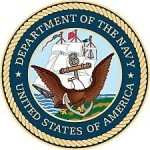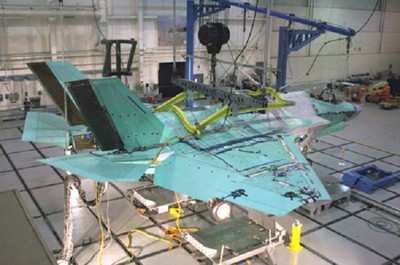Navy Is "Not Soft" On The F-35 Carrier Variant
 The Navy needs the F-35 Lightning II joint strike fighter's
fifth-generation capabilities, the service's acting director of air
warfare said Monday.
The Navy needs the F-35 Lightning II joint strike fighter's
fifth-generation capabilities, the service's acting director of air
warfare said Monday.
Navy Rear Adm. Michael C. Manazir spoke to reporters to
"completely dispel the rumor that the Navy is soft on F-35C." The
F-35C is the aircraft-carrier version of the joint strike fighter.
The F-35A model is for the Air Force, and the F-35B will be a
vertical take-off and landing model for the Marines.
The FA-18E and FA-18F Super Hornets are great airplanes, Manazir
said, but they do not have the capabilities that the F-35C will
bring to the Navy. Delays in the joint strike fighter program and
the cost increases associated with them caused some supposition
that the Navy would turn to the FA-18s, he added.
The Navy has had the F-35C on its horizon for more than a
decade, the admiral said. In that time, the FA-18's capabilities
have grown, with the latest aircraft - the E, F and G models -
reaching the fourth-generation airframe's limits. "We need to move
into the F-35C to realize our vision of tactical air coming off of
carriers," he said. The joint strike fighter brings stealth
capabilities, advanced sensor and data fusion, and a systems
approach to warfighting, Manazir said. "We're completely committed
to the F-35C," he added, noting that staying with the Super Hornet
would put the United States at a disadvantage against a near-peer
competitor.

Still, the admiral said, the Super Hornet program is not ending,
just yet. The Navy wants to buy 124 of the aircraft through fiscal
2013 to bring its number of Super Hornets to 515. Beginning in
fiscal 2016, he said, aircraft carriers will deploy with a mix of
Super Hornets and F-35C's. The Navy needs 44 strike fighters per
flight deck, he added.
Defense Secretary Robert M. Gates ordered a restructuring of the
joint strike fighter program last year. That effort allowed the
Navy to move an additional aircraft into flight tests, and to buy a
software line "that gives us additional integration capability and
added risk reduction in software, which is always the toughest
thing to do in a new program," Manazir said. Operational testing
will move to April 2016, and this will fulfill all prerequisites
for initial operational capability, he told reporters.

F-35C Drop Test
The first deployment of the new aircraft will be December 2016,
with the second deployment in February 2017. The Navy faces a
shortfall of fighter aircraft, the admiral noted. "Without
mitigations, ... [the shortfall] is about 177 total Department of
the Navy airplanes," he said. "That peaks in 2017." Mitigation
efforts bring that number down to about 100, he said. That could
drop further, he added, if the demands on the fleet lessen - a
conclusion the admiral said he is not going to make, given the
uncertain times. "We are focused on addressing that shortfall," he
said, adding that extending the life of some of the oldest Hornets
through 2020 would help cover it.
The Navy does not have a shortfall in strike aircraft today,
Manazir said, but the expected wear-out date for its inventory
begins in fiscal 2012. The 1,180 strike aircraft now in the Navy's
inventory fall within the scope of the service's maintenance
capabilities, while providing the planes needed for a rotational
force, the admiral said.
 ANN's Daily Aero-Linx (04.15.24)
ANN's Daily Aero-Linx (04.15.24) Classic Aero-TV: 'No Other Options' -- The Israeli Air Force's Danny Shapira
Classic Aero-TV: 'No Other Options' -- The Israeli Air Force's Danny Shapira Aero-News: Quote of the Day (04.15.24)
Aero-News: Quote of the Day (04.15.24) Airborne 04.16.24: RV Update, Affordable Flying Expo, Diamond Lil
Airborne 04.16.24: RV Update, Affordable Flying Expo, Diamond Lil ANN's Daily Aero-Term (04.16.24): Chart Supplement US
ANN's Daily Aero-Term (04.16.24): Chart Supplement US





